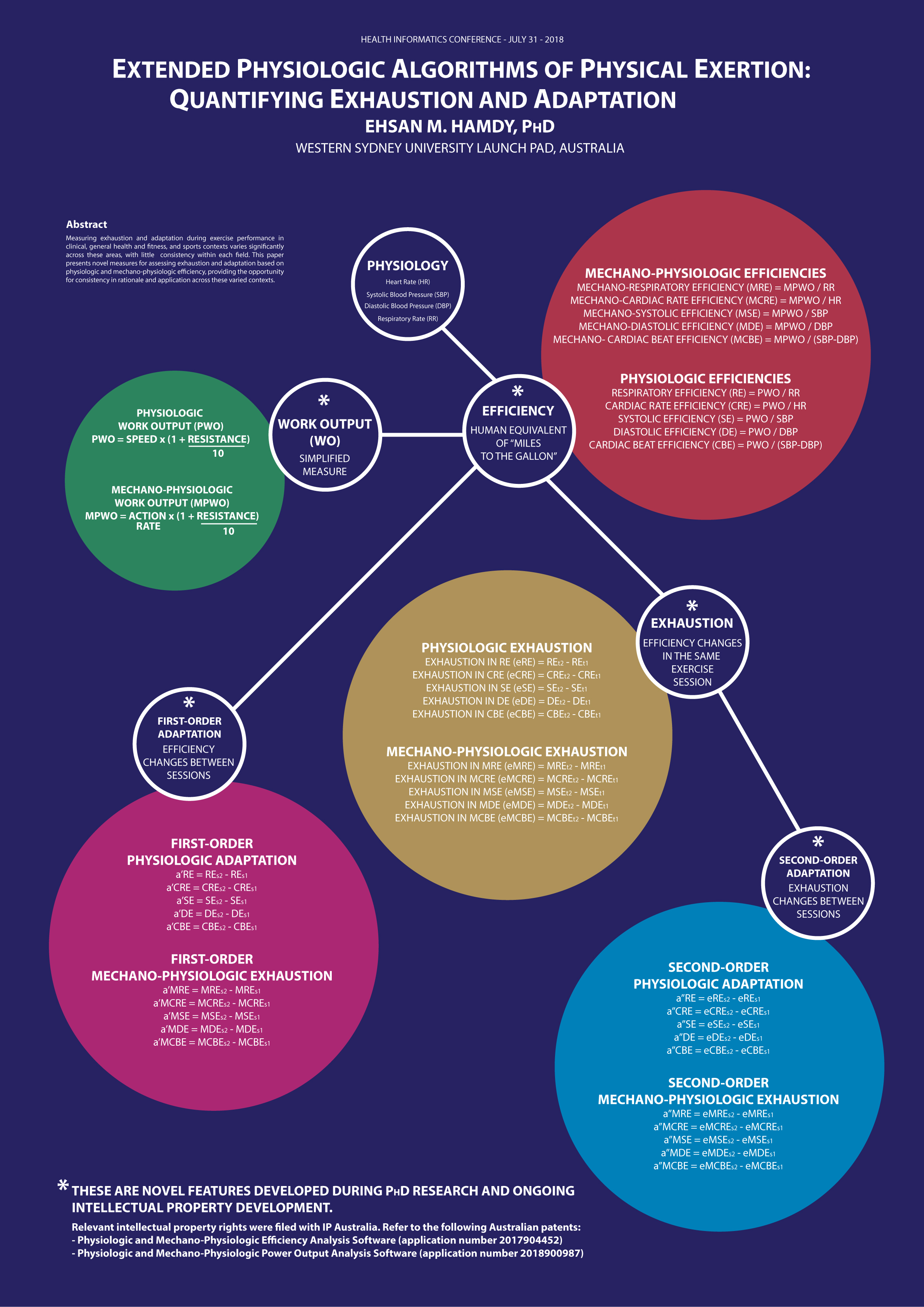"Simple but Significant" Vibes 😎
Like the video says... "make it simple but significant" is the theme for today. It's actually a lesson I learned many years ago in relation to not just my work but everything.
This is the track I'm listening to right now as I write this next part of the PAPE overview. Enjoy 🙂
Physiologic Efficiencies
Work Output (WO)
As usual, I'm going to refer to the figure on the right for simplicity. I developed the WO equations in two falvours. The first is called Physiologic Work Output (PWO). It's given by the algorithm at the top of the green circle in the figure. This form of calculating WO was developed as an alternative to complex methods used by highly-trained professionals using expensive equipment and complex techniques like cardiopulmonary exercise testing for gas analysis during exercise (since these kinds of resources are not usually available in most gyms and certainly not in the typical home).
To calculate PWO, all you need to know is the speed and the resistance. Resistance in walking or running is as simple as incline setting on a treadmill or slope of an outdoor track. Other exercise modalities use different forms of resistance and slight variations of this main principle, but they all share the same essential idea. Keeping calculation simple but linking the necessary parts of the work being done together in a cohesive way that can be used for further calculations.

Example: Respiratory Efficiency (RE)

The Basic Efficiencies
Using the WO calculated above, we then apply equations like that for Respiratory Efficiency (RE) shown on the left, and included in the red circle in the main figure. Don't worry too much about the maths behind it. It's actually a very simple concept to apply.
Mechano-Physiologic Efficiencies
Different WO Calculation
In the case of mechano-physiologic work output (MPWO), we're actually looking at the number of actions taken to achieve the motion, rather than the speed. We still consider resistance to the motion in the same way we did for PWO, but we might instead look at steps per minute, for example, rather than kilometers per hour. This concept is shown at the bottom of the green circle in the main figure.
Calculating the Mechano-Physiologic Efficiencies
If you refer to the top of the red circle in the main figure, you'll find the equations developed for calculating mechano-physiologic efficiencies in the different flavours using heart rate, respiratory (breathing) rate, and blood presure combinations. Notice that these are actually very similar to the standard physiologic efficiency algorithms.
Later Today
We will consider more of the PAPE framework next time because I think that might be enough geeky for one day, yeah? I know... but can't be helped if we want to have all the sciency thingies in the app and have you use them to get your best result, we have to understand them. Soz, not soz 😀
For the rest of tonight's posts we'll keep it pretty chill for the most part, unless... well, you know 😉
In terms of coding, we'll look at some of the progress on the MOOVPAD project as well as more of my own learnings to improve the app development.
Creativity abounds too ladies and gents, with Blender AND Unity this time. Plus our usual mess of things that spew forth from the three functioning brain cells up in my noggin.
Questions? Good! 🙂
Til a little later then.
Stay awesome,
EMH

